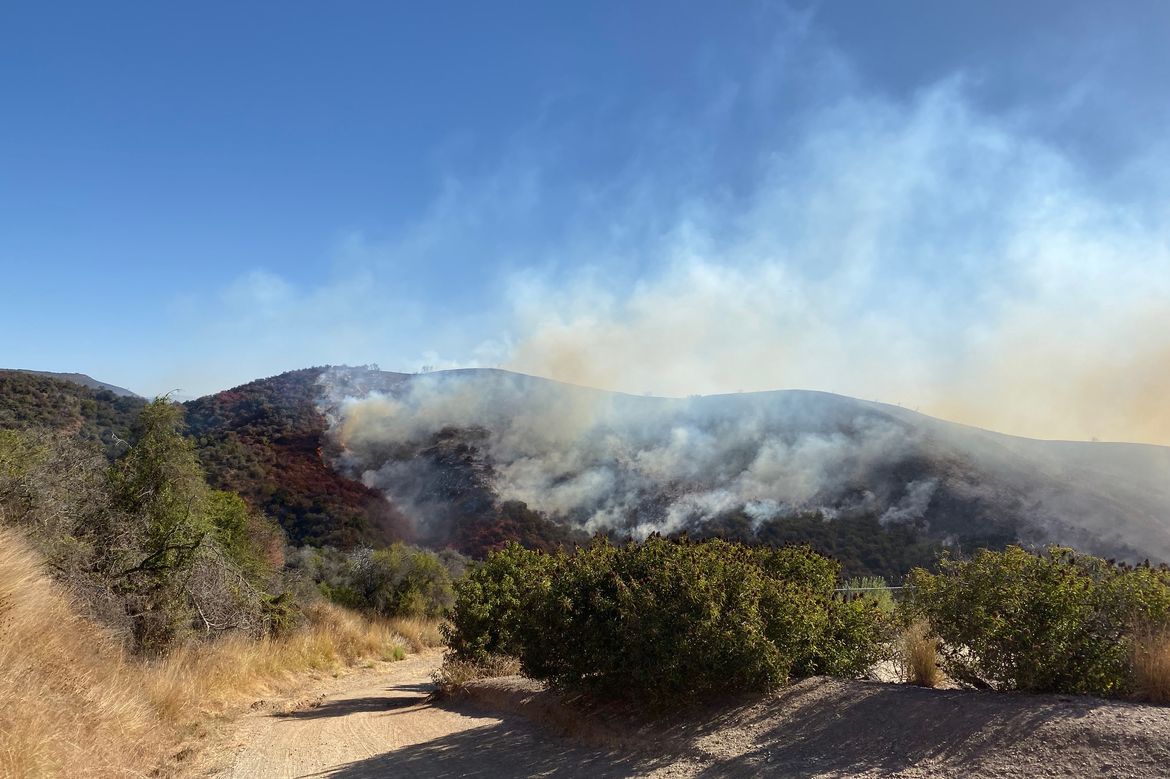Dr. Reza Ronaghi, a pulmonologist at the David Geffen School of Medicine at UCLA, explains how wildfires affect air quality and what precautions people can take to limit exposure to smoke and other fire-generated toxins in the air.
How do you know if the wildfires are making you sick?
It’s difficult to measure an individual’s exposure to smoke and know how much exposure can create a health problem. But, in general, minimal exposure to wildfires — such as experiencing a fire once a year — is not enough to cause long-term health damage.
However, there are some symptoms from exposure to smoke and particulate matter — the tiny pollutants that get stirred up in a fire and irritate the lungs — that can affect one’s health in the short term, including irritated eyes, a runny nose, shortness of breath and a scratchy throat.
There are additional risks for people with health conditions such as asthma and chronic obstructive pulmonary disease, or COPD. Fires can exacerbate symptoms of those diseases and cause increased difficulty breathing and wheezing. It’s important to seek medical attention if this occurs.
How can people stay healthy and safe during a fire?
It’s important to use common sense. If it looks smoky outside, or if you see ash or soot in the air or on your car, stay indoors with the windows and doors closed. If it’s safe to leave the danger area altogether, that is another good option.
It’s also important to listen to local authorities, such as fire department and public health officials, who often share information via social media.
If they tell you to evacuate your home, listen. If your child’s school is canceled, it is to keep children safe from potentially poor air quality or a potential evacuation. If you are in a voluntary evacuation area, you are likely downwind from a fire and in an area with poor air quality. You should evacuate or stay indoors.
If you are advised to stay indoors, take steps to keep indoor air as clean as possible. Don’t vacuum. That stirs up particles already inside your home. And don’t smoke. That puts even more pollutants in your lungs.
What precautions can people take if they have to be outside for their jobs, during a commute or for any other reason?
If you must be outdoors, consider wearing a mask. But understand that not all masks provide equal protection. The best choice is an N95 mask, which covers the nose and mouth and helps protect the wearer from breathing in hazardous pollutants. The mask has to be fitted and sealed against the cheeks; most standard masks are not sealed tightly enough to be effective.
After a fire, when is it safe to resume normal activity?
It’s a good idea to check local air quality reports and news coverage. Local forecasts and air quality information are available on the AirNow website.
And before you make the decision to resume your normal routine, including physical activities outside, make sure that conditions have improved. This means there should be no visible smoke, soot or ash, and no smell of smoke in the air. It’s also important to pay attention to your health. If you’re experiencing symptoms form smoke exposure that aren’t going away, you should seek medical care.


